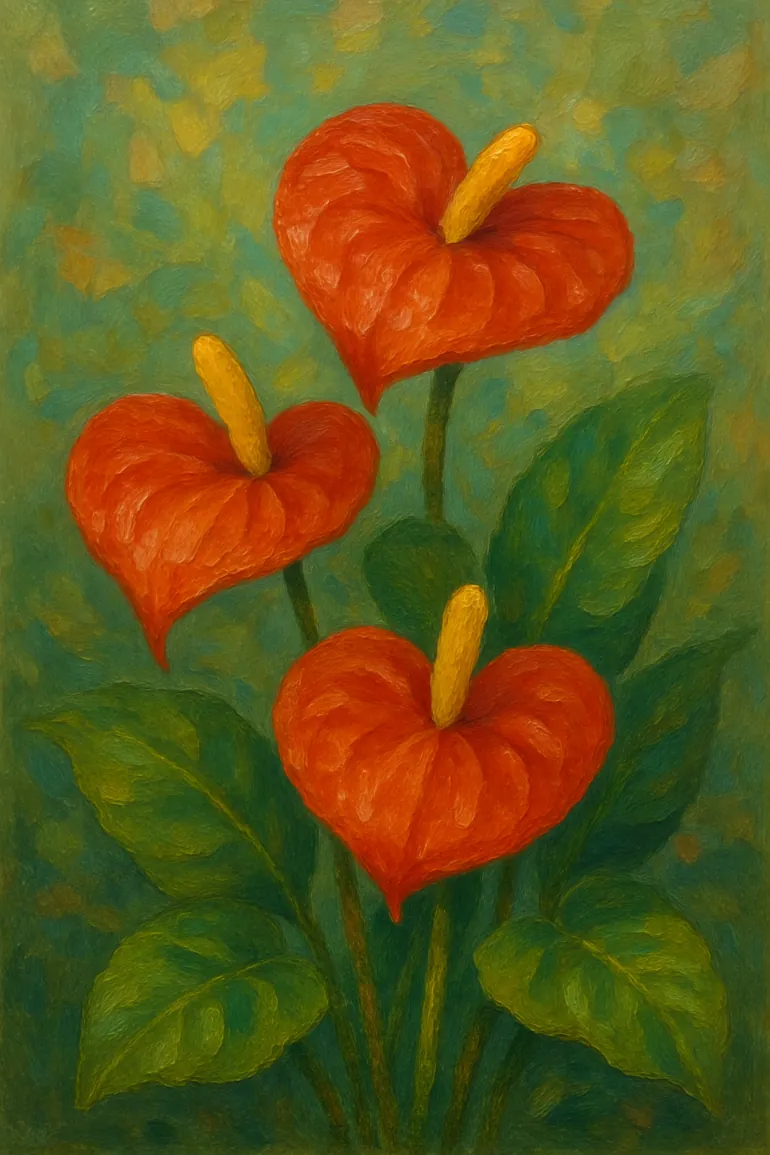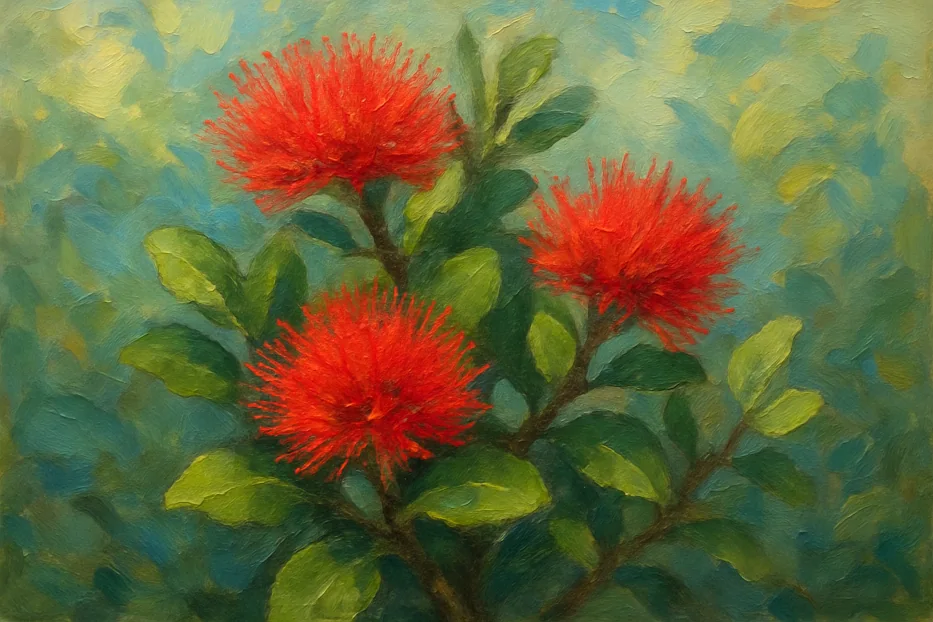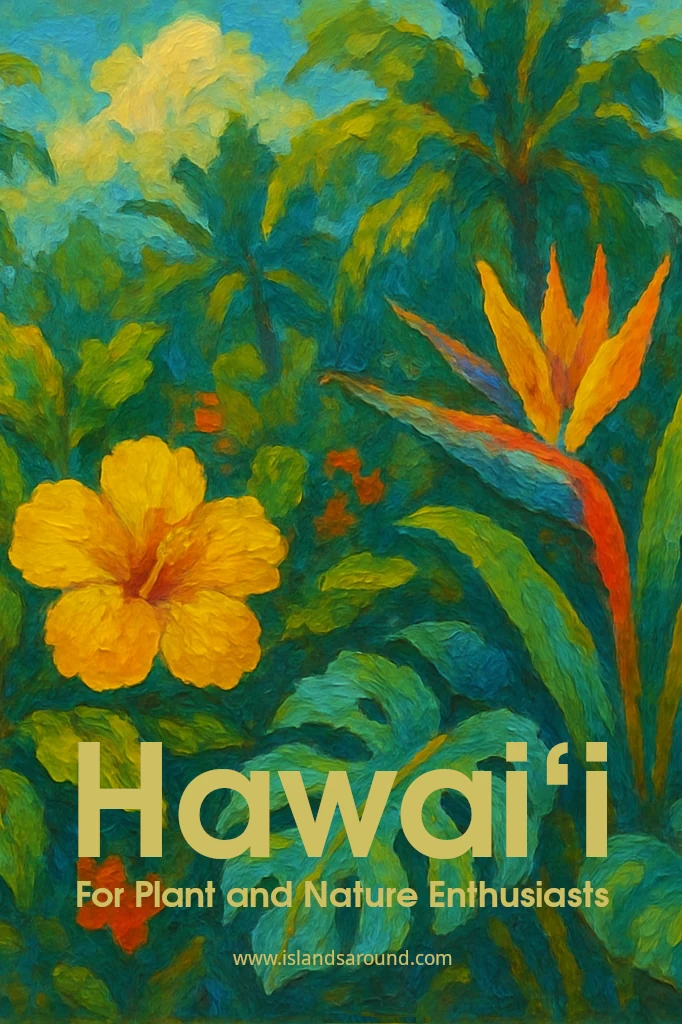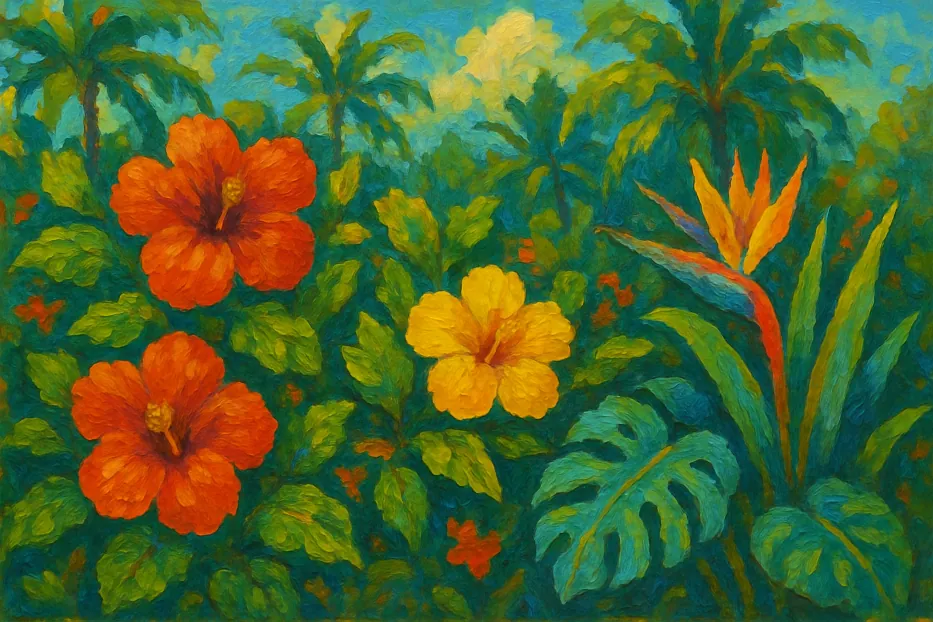Hawaii is a wonderland for nature lovers. Its vast and diverse landscapes span from lush rainforests and misty cloud forests to volcanic deserts, black sand beaches, and alpine tundra.
Home to an incredible number of endemic plant species and unique ecosystems, the largest island in the United States offers an unforgettable journey into the heart of Pacific biodiversity. Every trail, overlook, and garden is an opportunity to witness nature’s quiet brilliance thriving across lava and lushness alike.
Table of Contents
Botanical Gardens and Arboretums
Hawaii Tropical Botanical Garden
Nestled in a lush rainforest along the Hamakua Coast near Hilo, the Hawaii Tropical Botanical Garden features more than 2,500 species of tropical plants. A boardwalk leads you past waterfalls, streams, and an astounding collection of orchids, heliconias, and giant ferns. The spectacular garden is a peaceful escape that highlights the vibrant beauty of tropical flora. You’ll also find a breathtaking view of Onomea Bay, making this a feast for both plant lovers and photographers.

Pana‘ewa Rainforest Zoo and Gardens
Located just outside Hilo, the Pana‘ewa Rainforest Zoo and Gardens is the only natural rainforest zoo in the U.S. The botanical collection includes tropical flowering trees, bamboo, palms, and exotic fruit trees. It’s a great family-friendly stop that offers both botanical diversity and native wildlife encounters. As you stroll, you’ll spot colorful peacocks and learn how plant life supports the island’s broader ecological web.
Sadie Seymour Botanical Gardens
On the western side of the island in Kailua-Kona, the Sadie Seymour Botanical Gardens presents native Hawaiian plants alongside ethnobotanical collections used by early Polynesian settlers. It’s a lovely place to learn how plants shaped Hawaiian culture, diet, and medicine. The garden also serves as an educational center, often hosting community workshops on native flora and sustainable gardening practices.

Nature Reserves and Volcanic Landscapes
Hawaii Volcanoes National Park
A living, breathing landscape where you can explore raw geology and unique plant life. The park’s diverse terrain spans barren lava fields, rainforests, and subalpine shrublands. Endemic plants like the `ōhi‘a lehua and silversword thrive here, alongside rare ferns and mosses. The contrast between stark black lava and vibrant green foliage is truly otherworldly.
Pu‘uhonua o Hōnaunau National Historical Park
This sacred site near Kona preserves both cultural heritage and native coastal plants. You’ll see coconut palms, hala trees, and coastal naupaka shrubs, with the gentle backdrop of tidepools and sandy beaches teeming with marine life. The grounds tell stories of refuge and resilience, and the natural landscape enhances the spiritual atmosphere. Interpretive signs help visitors understand the deep connection between land and life in Hawaiian culture.
Mauna Kea Summit and Slopes
The alpine desert on the upper slopes of Mauna Kea is unlike anywhere else in the Pacific. It’s home to hardy native species like the Mauna Kea silversword, which grows nowhere else on Earth. The lower slopes are draped in native koa and māmane forests—important habitats for endangered native birds. As you ascend, each elevation unveils a new ecological zone, revealing the dramatic vertical diversity of the island.
Native Plants and Endemic Flora
Hawaii is a treasure trove of endemism. Nearly 90% of the island’s flowering plants are found nowhere else in the world. These species evolved in complete isolation, making them incredibly unique and vulnerable. Their fragile beauty is a reminder of the island’s deep ecological history.
Iconic Endemic Species
- Hāpuʻu Ferns: These giant tree ferns dominate the rainforests around Hilo and Volcano. Their massive, unfurling fronds create lush, shaded understories that shelter mosses and native insects.
- Koa Trees: Towering native hardwoods that form the backbone of upland ecosystems. Koa wood is also prized in Hawaiian carving and canoe-building, linking the tree to cultural heritage as well as ecological significance.
- ʻŌhiʻa Lehua (Metrosideros polymorpha): A foundational forest species and sacred tree in Hawaiian mythology. Look for its fiery red blossoms across the island’s forests. This tree often colonizes fresh lava flows, creating the first wave of forest regeneration after an eruption.

Cultural Gardens and Traditional Agriculture
Amy B.H. Greenwell Ethnobotanical Garden
Located in Captain Cook, Amy B.H. Greenwell Ethnobotanical Garden showcases traditional Hawaiian agricultural methods and the plants used by early settlers, such as taro (kalo), sweet potato, breadfruit (ʻulu), and sugarcane. Learn how ancient Hawaiians cultivated the land in harmony with nature. Interpretive paths guide visitors through four ecological zones, each highlighting a different aspect of traditional Hawaiian life.
Kahaluʻu Ma Kai Cultural Reserve
Here you can explore dryland forest restoration efforts and see ancient Hawaiian agricultural terraces being brought back to life. This site emphasizes community-based stewardship and native planting. Visitors are often welcome to participate in volunteer days, giving hands-on experience in planting and restoration.
Wildflower and Fern Hunting
Rainforest Blooms
In East Hawaii, especially around Hilo and Volcano, you’ll find a lush paradise of wild orchids, anthuriums, hibiscus, and flowering gingers. Rainfall nurtures a carpet of ferns, mosses, and vines year-round. Early morning is the best time to visit, when mist lingers and the forest feels like a living, breathing organism.
Dry Forest Discoveries
On the western side, native dry forests around Puʻuwaʻawaʻa and Waikoloa are home to endangered dryland species like wiliwili trees and `āwikiwiki vines—rare and unusual finds for plant enthusiasts. These forests are open-air museums of evolutionary adaptation, with plants sculpted by sun, lava, and drought.
Foraging and Plant Traditions
While foraging in the wild is regulated, guided tours introduce visitors to traditional uses of plants, such as herbal remedies, dyes, and hula-related flora. Always forage respectfully and with permission, especially on sacred or conservation lands. Cultural guides also share moʻolelo (stories) that breathe life into each leaf and root.
Hawaii Hiking Trails and Nature Walks
Kīlauea Iki Trail
Descend through native rainforest into a volcanic crater. Along the trail, you’ll walk past ʻohiʻa trees, hāpuʻu ferns, and steam vents—an unforgettable combination of plant life and raw geology. The stark contrast between jungle and lava floor offers a dramatic narrative of destruction and rebirth.
Puʻuwaʻawaʻa Trail System
This network of trails near Kona winds through rare dry forests and up volcanic cinder cones. It’s a botanist’s delight, with a chance to spot endangered trees and native shrubs adapted to drier conditions. Panoramic views from the summit reveal the patchwork of forest restoration and the story of ongoing conservation.
Kalōpā State Recreation Area
This hidden gem near Honokaʻa offers a cool, misty forest full of endemic plants. Short, easy nature trails make it perfect for quiet, contemplative walks among ferns, mosses, and flowering trees. The peaceful atmosphere of Kalōpā State Recreation Area feels untouched by time, inviting a slower, more mindful exploration.

Planning Your Visit to the Big Island
The best time to visit for plant and nature enthusiasts is between March and May, when rainfall feeds lush growth, and many native trees and shrubs are blooming. However, the Big Island’s varied microclimates mean there’s always something in season somewhere on the island. You can start your day in a rainforest and end it watching the sunset over a desert landscape—each environment offering new plants to admire.
For a deeper experience, join a guided eco-tour led by local botanists, cultural practitioners, or conservationists. These tours offer incredible insights into Hawaii’s natural history, traditional uses of plants, and ongoing efforts to protect native species. Many guides also provide access to areas otherwise closed to the public, giving you a rare and respectful view into Hawai‘i’s hidden green worlds.

